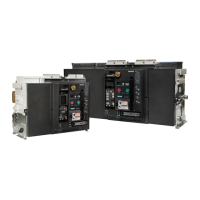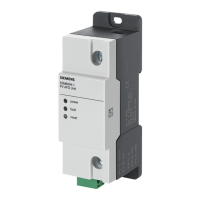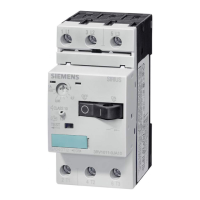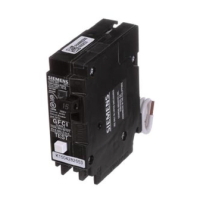
Do you have a question about the Siemens 15-GMI-750 and is the answer not in the manual?
| Brand | Siemens |
|---|---|
| Model | 15-GMI-750 |
| Category | Circuit breakers |
| Language | English |
Defines a "Qualified Person" for manual tasks, including training and safety practices.
Lists critical safety procedures to follow, emphasizing de-energization and safe maintenance practices.
Describes initial checks before applying control power, focusing on spring discharge and component status.
Details how to safely disconnect control power to the circuit breaker within the switchgear.
Explains the procedure to ensure closing and tripping springs are fully discharged before maintenance.
Step-by-step guide for removing circuit breakers from lower cells or outdoor enclosures.
Details the process for removing circuit breakers from upper cells, including using extension rails.
Covers removal procedures for specific outdoor and raised-pad indoor switchgear configurations.
Describes how to manually charge the closing springs and verify the charged status.
Specifies performing insulation and vacuum integrity tests before installation.
Final mechanical checks ensuring contacts are open and springs discharged before installation.
Describes the construction and basic operation of vacuum interrupters and primary disconnects.
Describes the mechanism storing energy for closing/opening, its trip-free capability, and latch systems.
Provides a detailed explanation of the five operational modes: charging, closing, trip-free, opening, and reclosing.
Explains the process of charging the closing springs, both manually and electrically.
Details the trip-free function, preventing closing during tripping or vice-versa.
Explains the mechanical and electrical trip-free capability of the GMI circuit breaker.
Describes safety interlocks like rating and trip-free interlocks preventing unsafe operations.
Explains the trip-free interlock's function in preventing operation when the breaker is between positions.
Details the rating interlock that prevents insertion of breakers into cubicles with higher rating requirements.
Details performing manual spring charging and checking contact erosion using visual marks.
Repeats steps for checking automatic spring charging, requiring control power.
Describes performing electrical close and trip operations to verify control circuit functionality.
Introduces high potential tests for vacuum integrity and insulation using high voltage equipment.
Details the high potential test procedure to verify the vacuum integrity of the circuit breaker.
Provides steps for conducting the vacuum integrity test, including safety precautions and test voltage application.
Explains the importance of insulation and contact resistance tests for future comparison and detecting deterioration.
Outlines the procedure for performing insulation and contact resistance tests using specific equipment.
Outlines procedures for removing and replacing vacuum interrupters, emphasizing care with bellows.
Provides a table listing common problems, symptoms, and possible causes/remedies for breaker operation.
Continues the troubleshooting guide, covering nuisance or false closes and circuit breaker trip issues.











